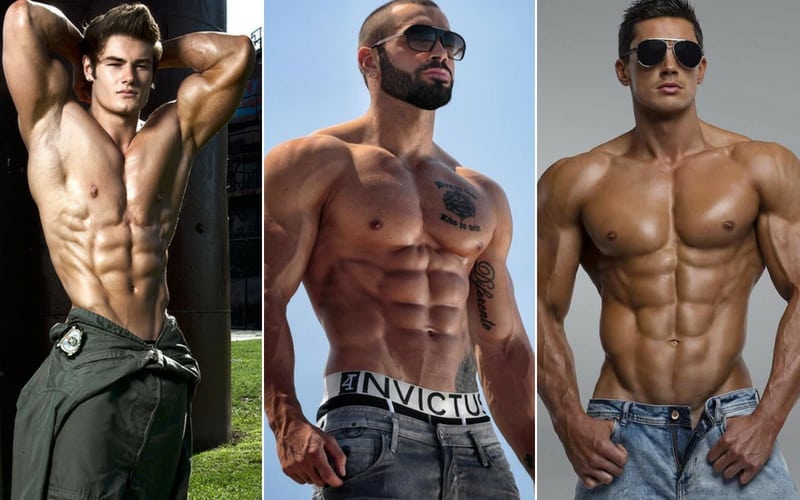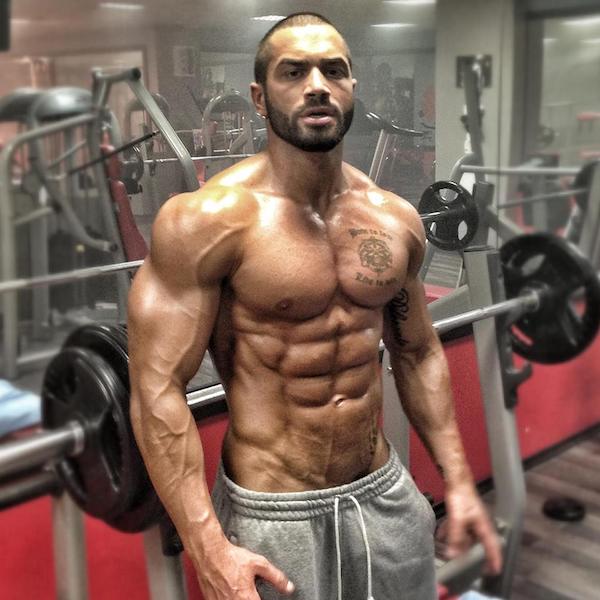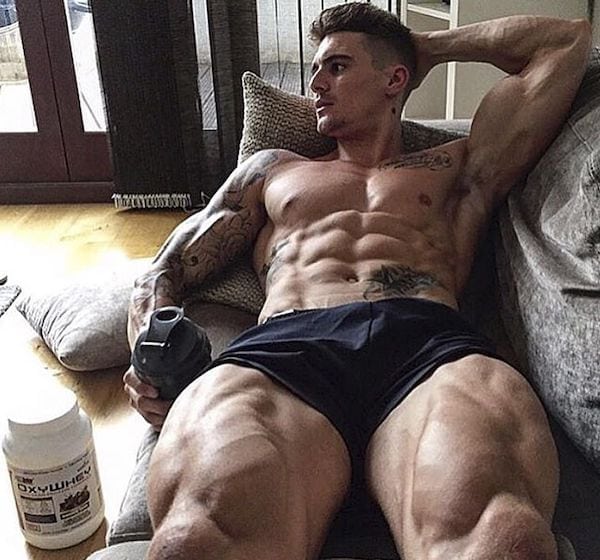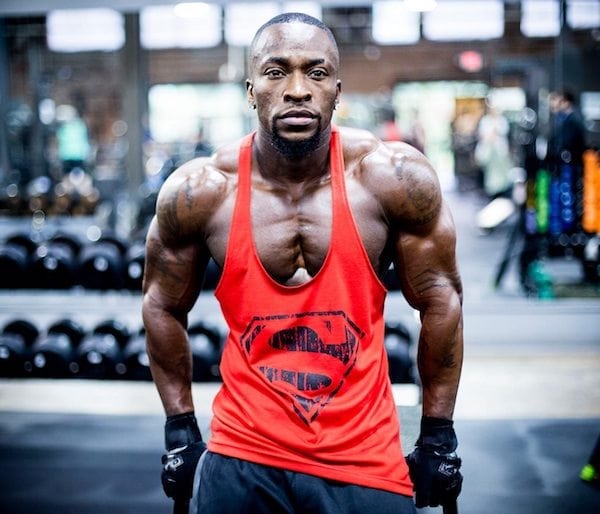No products in the cart.
10 Tips to Become a Male Fitness Model

The fitness world has exploded recently, social media has been a huge catalyst for change.
More people than ever are interested in bodybuilding and physique modelling, as well as Crossfit, powerlifting, and just regular people lifting weights. Because of this, the job of a fitness model has become fiscally sound due to there being more demand and more money in fitness.
This has led to a huge amount of interest in pursuing fitness modelling as a career.
The problem with this is that there are only so many jobs out there, and many hundreds of thousands of people attempting to shine in a crowded market.
If you really want to stand out from the crowd then you’ll have to work incredibly hard, network your butt off, and realistically you’ll probably need to jump in with both feet.
The purpose of this article is to help you gain an edge over everyone else, by offering you 10 tips to become a male fitness model.
Remember, gaining the knowledge of what to do is only a small part of the battle. Actually doing the jobs required is what is needed.
What is Fitness Modelling?
A lot of people believe that fitness modelling and bodybuilding are essentially the same thing, this is not the case.
A fitness model will have a completely different physique to a bodybuilder (the same goes double for women, but that’s a whole other article).
Fitness models are supposed to be aesthetically pleasing, you’re looking for symmetry, a lean physique, and often good looks are important (though not always).
You still need to be blessed with some decent sized muscles, but nowhere near as much as even a natural bodybuilder.
Other than that, the roles are surprisingly similar. Instead of peaking for competitions, you need to peak for photo shoots. Instead of training to impress the judges you’re training to impress your employer, and both roles can be improved massively by a good social media following.
One big difference is that fitness models do not require steroids or other performance-enhancing steroids to do their job.
That doesn’t mean that fitness models all avoid steroids, it just means that you don’t have to take anything if you don’t want to.
Completely drug-free fitness models can easily excel in this industry niche. Now that we know what fitness models are, let’s look at the 10 tips to becoming a male fitness model.[toc]
Tip #1: Plan Everything

A lot of people’s approach to becoming a fitness model is to start going to the gym more.
They don’t make concrete decisions about timelines for success, how they are going to achieve their goal, and what sacrifices they are willing to make.
This won’t necessarily stop them from achieving their goal, but their chances of success are clearly going to be lower.
The first thing that you need to do is decide how serious you are going to take this.
If you really want to be a fitness model then you are going to have to make a decision about your employment.
Fitness models need to be able to train 6-7 days per week. They need to spend time planning and preparing their meals, and concentrate on building up their profile (more on this later).
You may be able to juggle all of this and have a full-time job, but it will be very difficult.
Lots of people say that they are willing to make any sacrifice to be successful, but very few people actually are. That’s absolutely fine, but if you’re competing against 10 guys for a job, and nine of them have dedicated their entire lives to succeeding, your chances will suffer.
We’re not saying that you should immediately quit your job and become unemployed. That’s not sensible either. But you need to find a way to fit in your gym activities around work.
Becoming a fitness instructor or personal trainer might be a good idea, as you will have more gym access, and your career and passions will combine.
Whatever choice you make, think it through in advance, and make the compromises necessary.
There are other things that need planning; how much time do you have before you need to be at a certain shape/weight? When are you going to be cooking your meals for the week? When do you need to start cutting for a shoot? Who are you going to contact about getting work?
All of this needs to be researched and planned out ahead of time.
Tip #2: Get on Top of Your Diet
Whether you are a bodybuilder, a fitness model, or a completely sedentary person, your diet is crucial to success and health.
Fitness modelling is all about maintaining muscle while staying at low body fat percentages. This means that your protein intake needs to be perfect.
Check out this study by Eric Helms, Alan Aragon, and Peter Fitschen [1]. In it, they discuss the perfect protein, carbs, and fat ratios for a natural bodybuilder.
This is probably the perfect calorie and macro recommendations for fitness models:
- Protein = 2.3-3.1g per kg of lean body mass
- Fat = 15-30% of total calories
- Carbohydrates = Remaining calories from carbohydrates
As you can see there is a lot of wiggle room here, if you prefer a higher fat diet then you can hit 30% of daily calories from fat.
If you want more protein then you can lower fat, or lower carbs, or both.
If you want more carbohydrates then lower fat and protein.
So long as you stick to at least the minimum (and maximum) for fat and protein, you can have whatever ratio you want. Use a calorie tracking app to discover your ideal calorie targets.
Tip #3: Track Everything
Not only should you be tracking your calories every day, and your macros. You also need to track your weight, your visual progress (shirtless selfies), your muscle circumference (use tailors measuring tape), and your results in the gym.
You can also track daily steps (great way to burn more calories while cutting), and your sleep.
Record it all in an exercise book, or on a spreadsheet, and gauge how you are progressing.
This will allow you to decide whether a particular training program is working, whether your calories are currently too high or too low, how your routine is affecting your sleep (and vice versa), and many other variables.
Tip #4: Sleep

Some bodybuilders claim that they need almost no sleep and can still succeed. Many other people also claim this.
While some people are genetically predisposed to be able to sleep less than the recommended amount, this is not the case for the majority.
If you are training hard you need to recover. If you are in a calorie deficit your hormones (testosterone and growth hormone in particular) will be in danger of dropping and affecting your health.
Sleep is the big reset switch that will allow you to work hard without it impacting your health. The harder you train, the more sleep you require [2].
Tip #5: Train Smart
Realistically you need to be training almost every day. If you are taking steroids then you should be training even more.
If you are natural then adding in rest days every 3 to 4 days is a smart idea.
We’re not going into which specific training program will help you because everyone is different. But concentrating on hypertrophy is necessary. Not avoiding any muscle or muscle group is also essential.
Skipping leg day is a cardinal sin in fitness modelling, as is skipping abs, arms, rear delts, you name it.
Remember we’re looking for bodies that are perfect from any angle.
Use the full range of motion, concentrate on tempo, rest properly between sets (45-60 seconds for hypertrophy, less than 40 seconds for fat burning), and look after yourself.
Tip #6: Supplements
While you could definitely get all the nutrients that you need from diet alone, this can end up costing you a lot of money and time.
Taking supplements such as whey protein is a sensible way to hit protein targets without spending a fortune on meat and dairy.
Creatine is also essential, and pre-workouts could also help.
Tip #7: Have the Steroid Discussion With Yourself

Steroids will help you train harder, recover faster, and build bigger muscles.
They unquestionably make fitness modelling easier.
However, they are 1) Illegal, 2) Potentially harmful, and 3) Require a lot of knowledge.
You can have an excellent fitness modelling career with or without steroids, so make your own decision on this.
Tip #8: Share Your Journey
Thanks to Social media, you no longer have to try and get jobs the old-fashioned way.
Make enough waves through platforms such as YouTube, Instagram, Facebook, and Twitter, and the jobs will come to you.
This is the great equaliser of our time. You can use it to your advantage.
If you are struggling to get work with traditional outlets, work hard at your own brand. Getting enough social proof can also be a sure-fire way of calling yourself a fitness model.
If enough people like what you’re putting out there, then you can make money from this.
Sharing your journey from in okay shape to being a fitness model is a fantastic way to manage that.
Tip #9: Take Every Advantage
A lot of success in life is about leveraging whatever small advantages you have.
Have a friend who’s a good photographer? See if you can trade skills with them for a free photo shoot.
Know somebody who is good with website building? Again, share what skills you have (diet, fitness, etc) with them and see if they can help you on your journey.
This tip sounds like a pro-steroid tip, but we believe that steroids are a different thing here. They are an advantage, but they can also be a disadvantage (like if you die from heart complications after taking them).
Ask for help when needed, help others when required.
Marginal gains are something that the British Olympic Cycling Team used to help them become the most successful team out there. Whatever small advantage they could find they used.
A study says that exercising at 5 pm is more effective than 9 am? Switch your training time.
A study says that taking casein protein before bed can improve recovery? Start doing it.
Obviously, we’re not talking about following every single bit of advice out there. That can lead to confusion and a lack of consistency. But if you know that something can help you train harder, diet better, or recover faster, use that tool.
Tip #10: Network
During tip #8 we talked about how social media can help you to bypass traditional hiring issues with big companies.
The “it’s who you know not what you know” mentality. But networking with successful people in the industry that you want a part of is a no-brainer.
See if you can train with them, write guest blog articles for them, get on their podcast.
Encourage other people that are coming up with you. If one of them succeeds, who do you think they’ll look to give a helping hand to?
This advice may not ever help you to reach the top of fitness modelling, but it’s damn good life advice anyway.
Make friends with people in your industry. Ask for help when possible. Try to mutually assist each other through collaborations. Make friends with people who can introduce you to other people.
You want to avoid doing these things solely for the goal of succeeding, people can see right through that.
Do it to make friends with people who have the same hobbies as you, the same goals as you, and will have lots in common with you. The fact that doing so will improve your chances of reaching your goal is an amazing added bonus!
Whatever you choose to do good luck. We don’t want to get too motivational here, but if you set your mind to something and work hard enough there’s a chance you’ll succeed.
Work hard, be consistent, be clear in your goals, and build an audience. Eventually, this should work out for you.

This is my dream job. One problem though, I am 50 😀 hahaha
I’m 30 m I’ve always been at the gym since age 15 but never had a guide my base muscles are always ready after a week of training but I want to try becoming a model